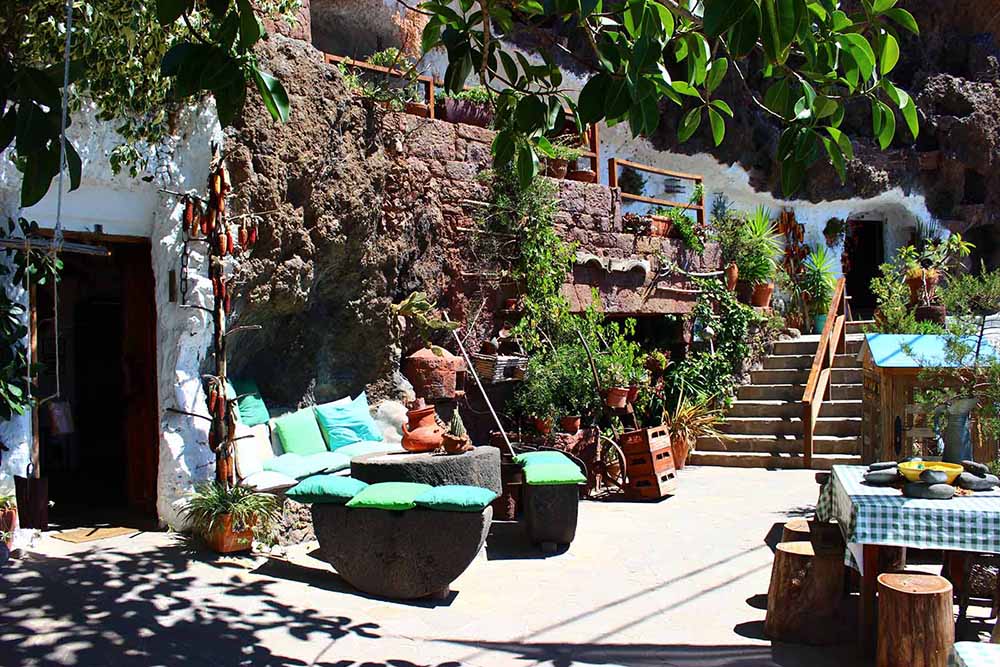Cave Nº 4 is designed to show the most relevant trades and crafts in Artenara in years gone by.
This cave is not whitewashed, to show us all the natural volcanic lava from which the cave was excavated. In the cave on the right we can see the effort that the first settlers put into creating these caves. Several generations of the original inhabitants were very enterprising and we must admire the efforts they put into establishing a thriving agricultural community, with only very basic tools to work with. (No JCB’s in those days, only manpower) We must remember that for every cubic metre of rock that was taken out, you get four cubic meters of rubble. This rubble will little by little over time (over hundreds of years) become arable land.
Without the efforts of these first settlers there would not be an Artenara as we know it. Given the height of Artenara (1272m), bearing in mind that the summer and winter weather can be extreme, the only stable environment was the temperature within their caves (approx. 20 degrees all year) making them liveable.
"Who has a cave in Artenara, has a treasure"
The wooden looms made possible the conversion of the wool from the livestock into blankets, fabrics, cloth etc. thanks to the hard and constant work of the weavers.
In the back room of the cave, which has a wall made of red rectangular blocks, we can admire the collection of the most popular crockery from Lugarejos. The potters worked sitting on the floor, and worked with the clay following the techniques of the ancient Canarians, which has changed little over the years. There was no potters wheel, pottery was made by hand, dried and cured in the open air. Open fires were made in hearths built with stones and filled with firewood to bake the pottery. Ovens and potters wheels were only introduced after the Spanish conquest, with the Castellanos inheritance, being of Roman-Arabic origin. All of this pottery is made from clay and sand, with red ochre to colour it. This is found in La Coruña (a neighbourhood of Artenara close to Lugarejos).
Special stones and simple tools serve to smooth and outline geometric patterns onto the pottery. Techniques and traditions were inherited and passed down through the generations, this work was done mostly by the female members of the family.
For more information about this pottery, read the book written by Don José Antonio Lujan, "The pottery of Lugarejos".
